8 Jun 2015 | mobile, Youth Board
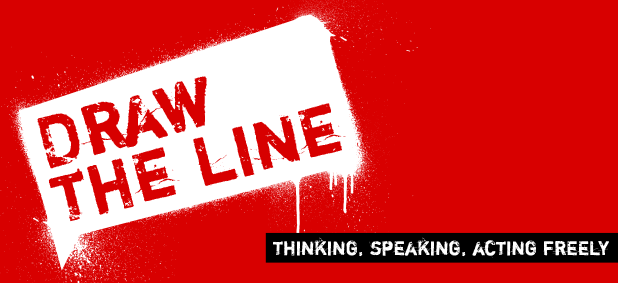
Over the past few months, the Index on Censorship Youth Advisory Board has been coming together to ask difficult, yet essential questions; attempting to spark and promote thought provoking debates and engage the general public in societal issues and conflicts that affect us all.
The topics we have explored in #IndexDrawTheLine can be found below. You can follow the links to see the youth board’s full coverage.
- Returning to the issue of extremism for our penultimate discussion, we looked at whether or not it has a place on campus, arguing that: “Universities should be places where young people have the freedom to learn, debate and use their knowledge to challenge guest speakers.”
But the conversation doesn’t stop there. We have to keep encouraging open debate and a level of transparency in a world full of censorship. It is imperative as new threats to free speech arise each day, and old threats recur. It is the responsibility of all of us to provide a voice for the voiceless, represented and unrepresented alike.
To join in future discussions, follow the #IndexDrawtheLine hashtag on Twitter.
This article was posted on 8 June 2015 at indexoncensorship.org
5 Jun 2015 | mobile, Youth Board

In the latest #IndexDrawtheLine, we’ve been asking the question: where should governments draw the line on everyday surveillance?
Mass surveillance has been a controversial issue, notably since former contractor for the US National Security Agency (NSA) Edward Snowden leaked information about the agency’s domestic spying. Today, some governments worldwide monitor phone calls, text messages and/or social media communications within the countries. Granted, mass surveillance may well be beneficial for governments to fight terrorism and ensure national security, but some people are concerned about the invasion of their privacy and personal life.
As well as the debate about this question on Twitter, we asked some students based around the world to give us their views. The students and their respective views can be seen in the form of photographs below.
One user on Twitter argued that the line should be drawn as per the law and added, “This right of OURS ‘…shall not be violated and no warrants shall issue but upon probable cause'” referring to the fourth amendment to the United States constitution.
Other responses suggested that governments should be able to ensure national security without invading the privacy of the people. One of the students below argues that the line should be drawn so that “my mother knows more about me than BIG BROTHER”, referring to the leader of the fictitious state from George Orwell’s novel Nineteen Eighty-Four.
The general consensus seems to be that government surveillance should not happen unless it is proved there is a genuine threat to the safety and security of the people.
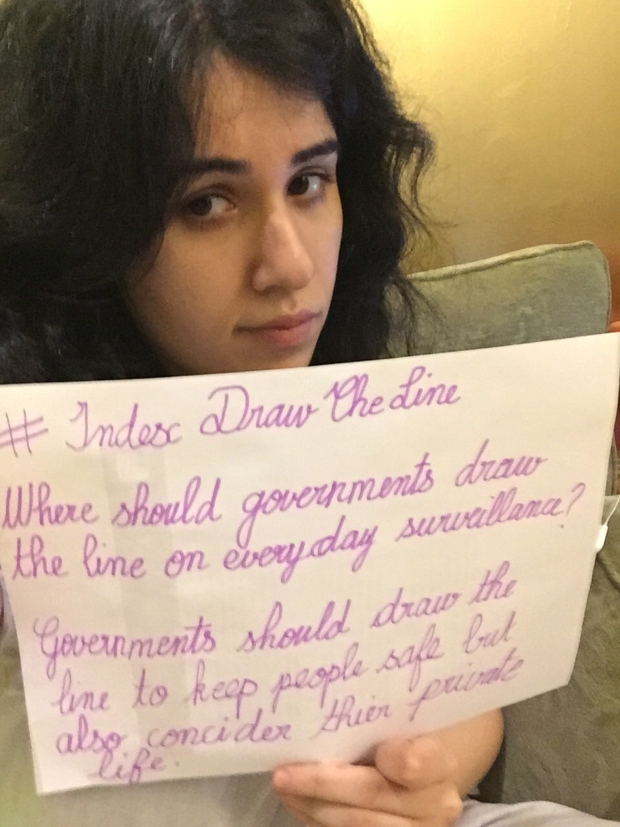
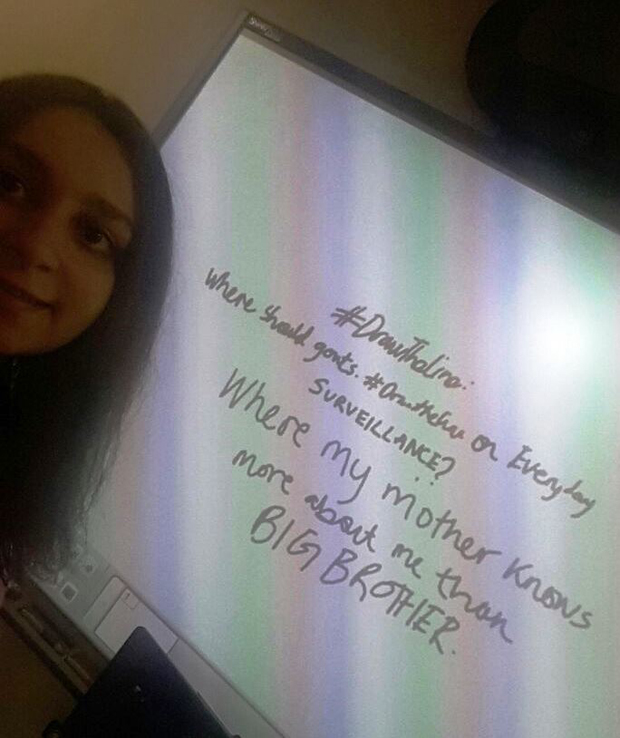
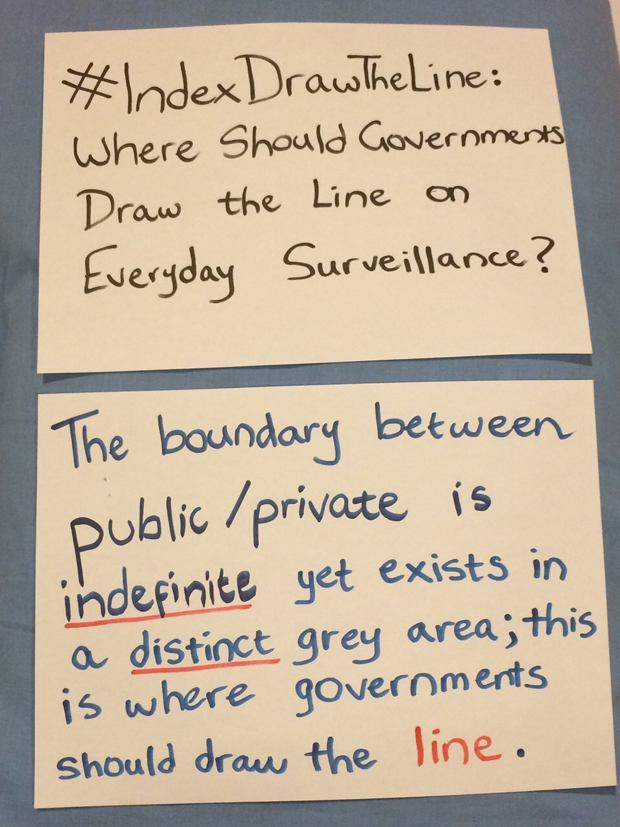
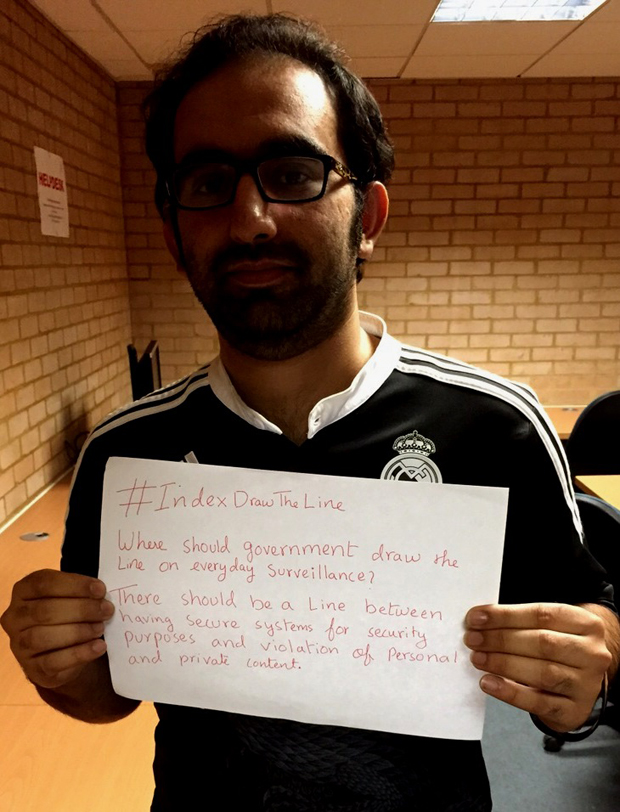
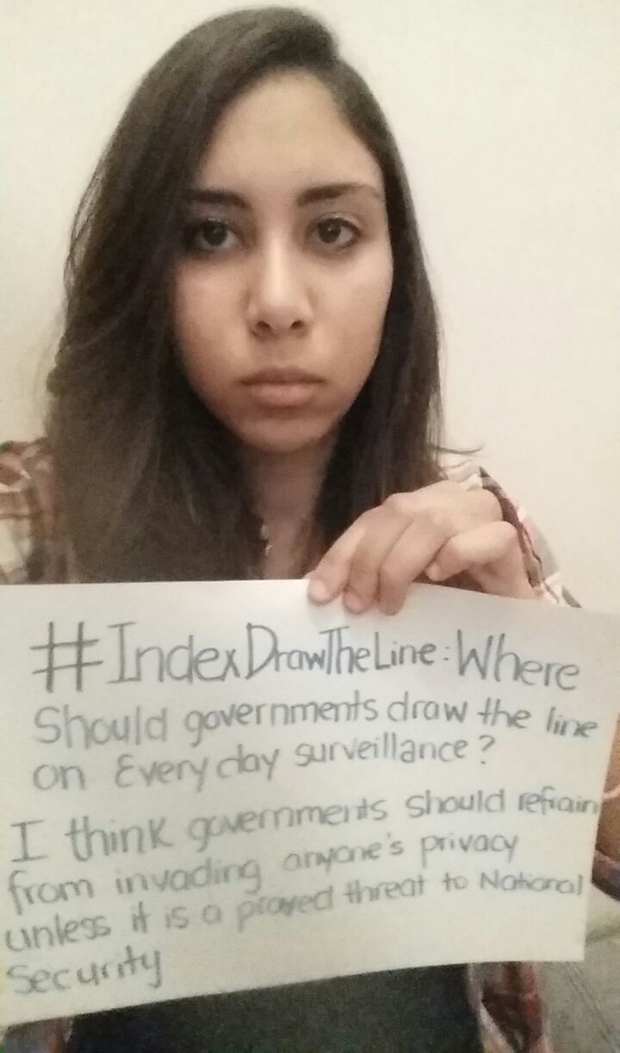
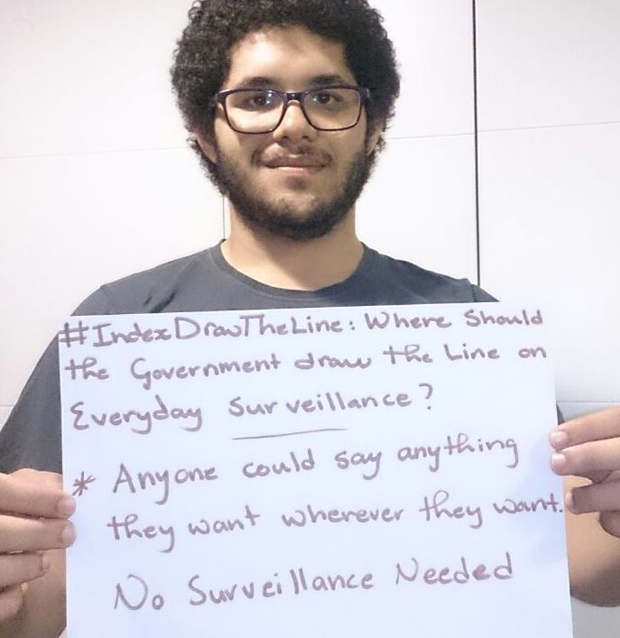
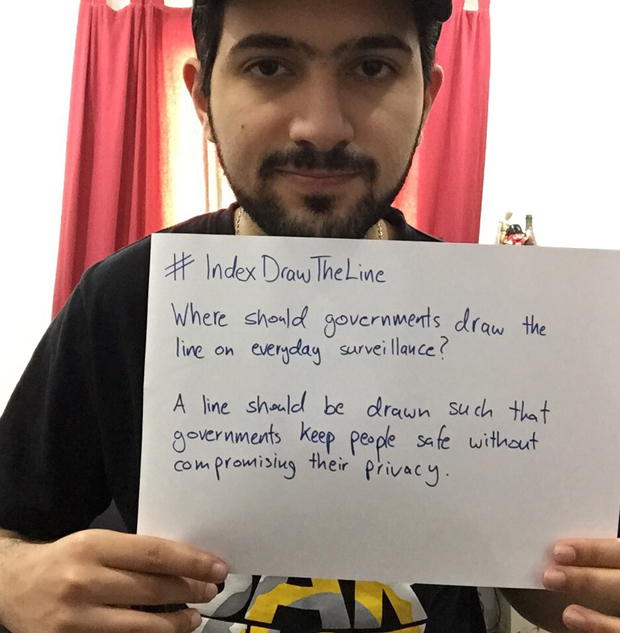
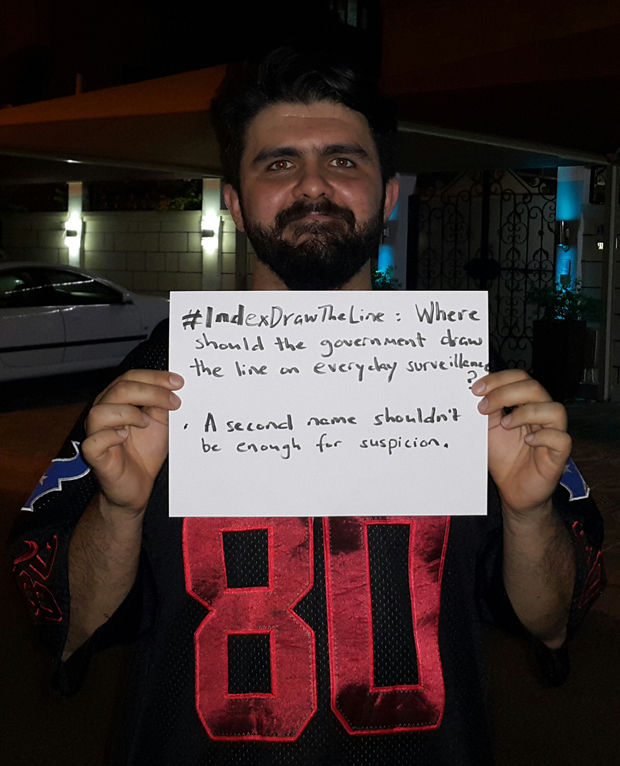
This article was posted on 6 June 2015 at indexoncensorship.org
24 Feb 2015 | Draw the Line, mobile

With the rise of Islamic State (IS) in the Middle East, people across various platforms of social media are sharing videos of brutal killings by the terrorist organisation. This month’s #IndexDrawTheLine question is: How much is too much?
Royal Jordanian Air Force pilot Muath Al Kasasbeh was captured by IS at the end of last year, and a graphic video was shared on the internet earlier this month, which appeared to show the pilot suffering a barbarous death.
In last year’s Gaza-Israel conflict, various graphic images were shared on social media. One incident that stood out was the case of four Palestinian children who were reportedly killed by Israeli shells whilst playing on a beach. Photographs and videos depicting the dead bodies of these children were shared on various networks.
Some would argue that sharing graphic content is a means of revealing the truth, helping to raise awareness of what actually happens to the people involved in these situations and how serious the issue is. Others would say that refraining from sharing these videos would stop terrorists from achieving their goals, respect those who were killed and perhaps remember them in a different way.
With all the graphic videos and photographs shared on social media, and the wider internet, where should we draw the line? Does this differ depending on who shares the content: terrorists? passers-by? news stations?
Tweet your response to #IndexDrawtheLine to join the conversation.
This article was posted on February 24, 2015 at indexoncensorship.org
16 Feb 2015 | Draw the Line, mobile

Growth can only happen when old obsolete ideas are replaced with newer, relevant ones. If we don’t challenge the established system of thought, we can’t move forward. If ideas that don’t work anymore aren’t rejected, new ones won’t find space. Without new and better ideas there is no movement in any field. Freedom of speech and expression is fundamental to that forward movement and as Salman Rushdie said, “What is freedom of expression? Without the freedom to offend, it ceases to exist”
We opened up the debate with Charlie Hebdo on our minds. The Hebdo massacre changed the world. Now there is an actual discourse on free expression across the globe. The world is coming together and expressing themselves collectively. Our twitter feed is proof of that. While a lot of people believe that the right to offend comes with the right to free expression, there are people who say that anything that leads to violence is wrong, and there is a fine line there which needs to be observed.
This is where we draw the line: somewhere in the ever-changing grey area between absolutism and stagnancy.
Below, are some young people from across India, who used photographs to join the #IndexDrawtheLine discussion. If you’d like to join the debate, tweet your photos or answers to #IndexDrawtheLine.
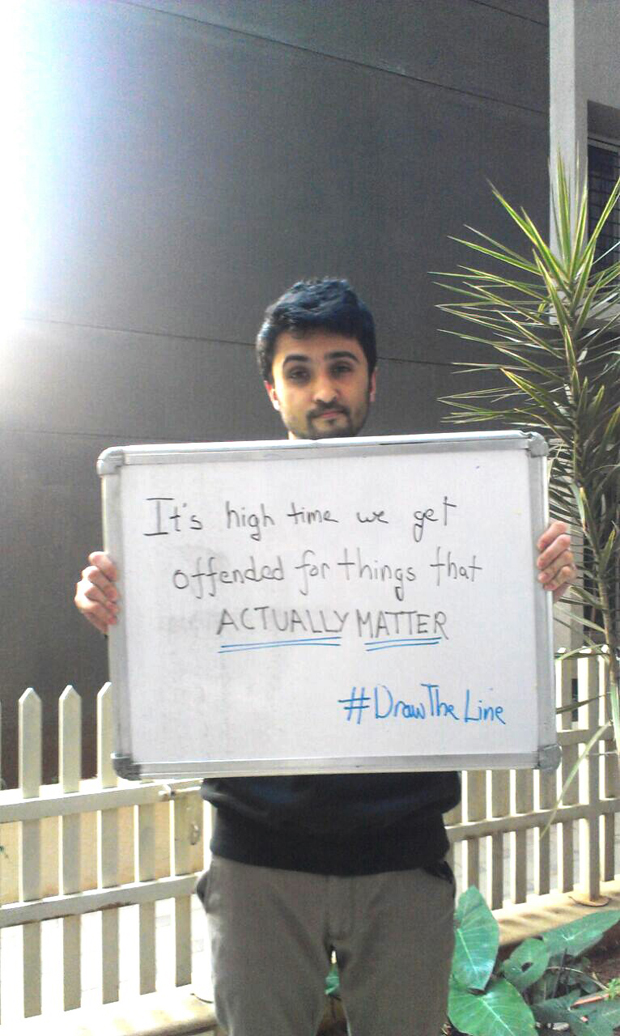
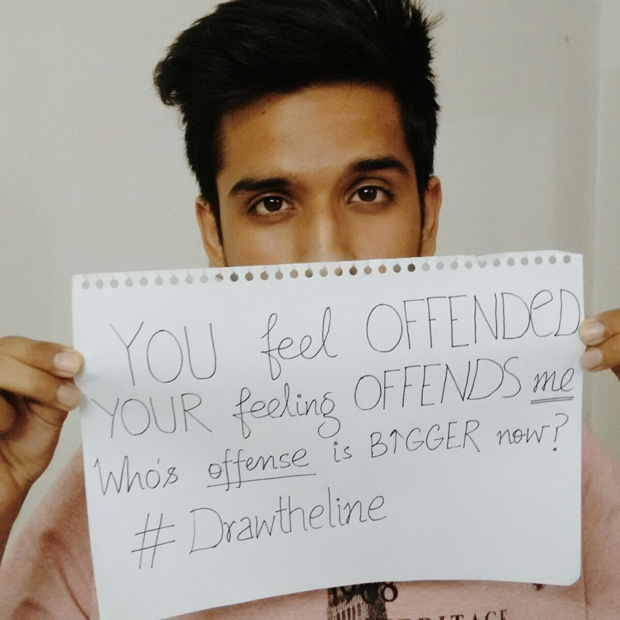
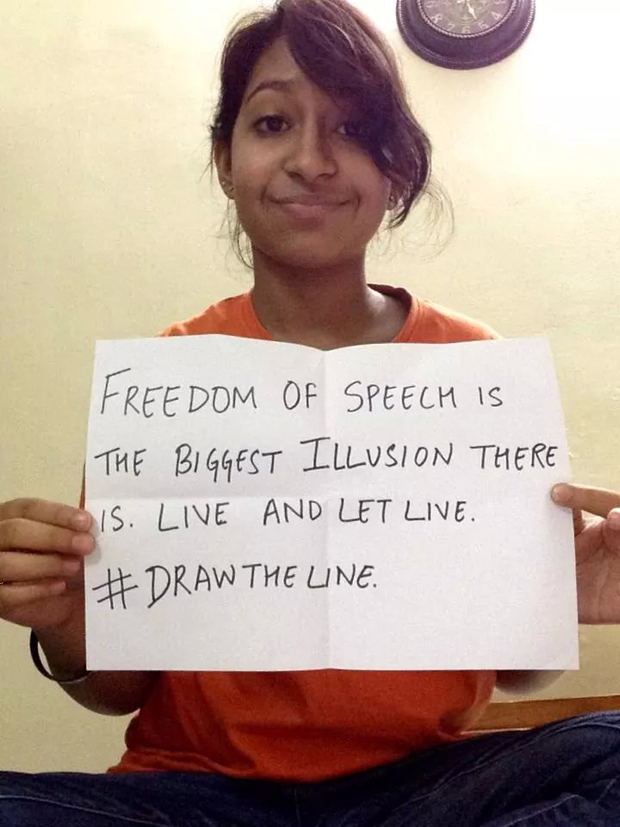
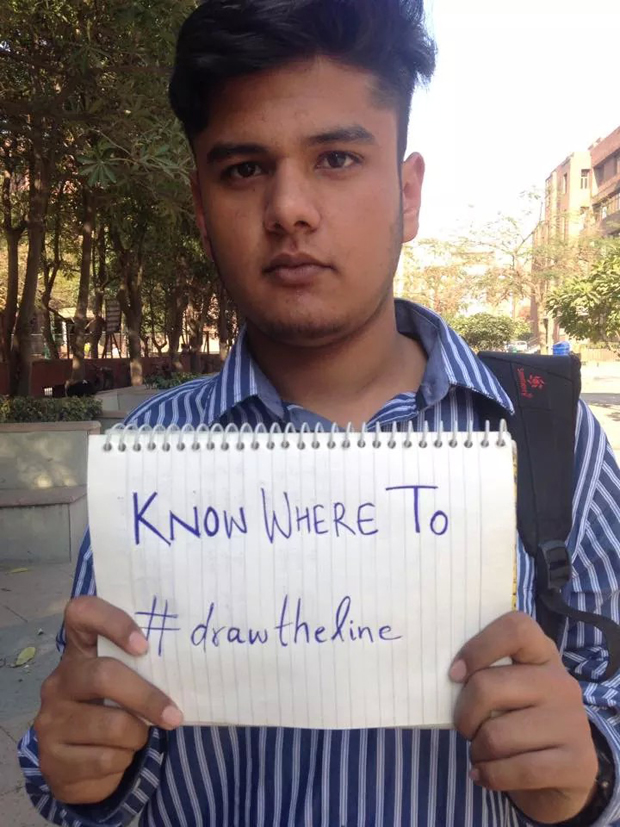
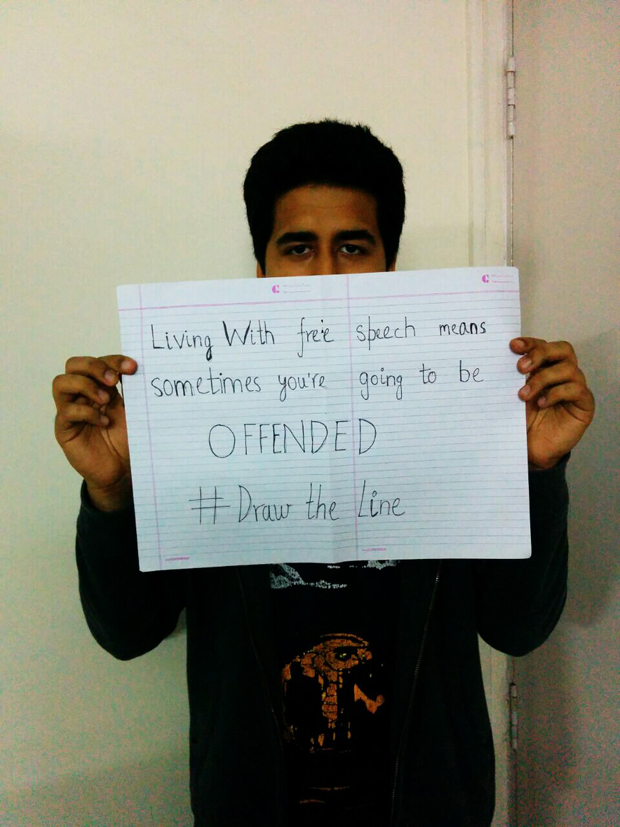
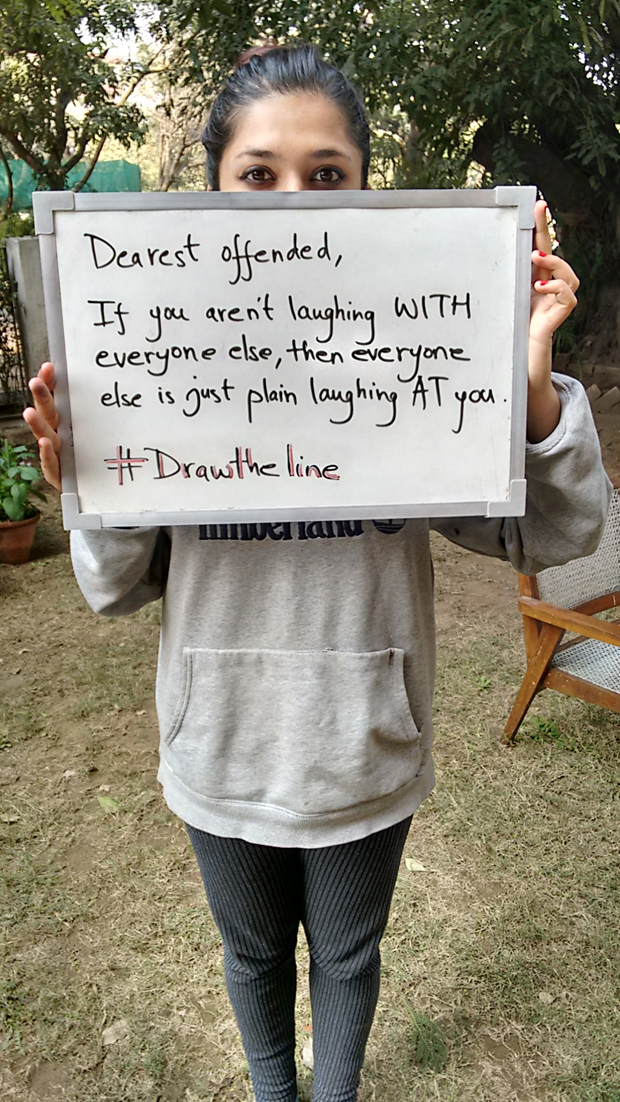
This article was posted on 16 February 2015 at indexoncensorship.org















